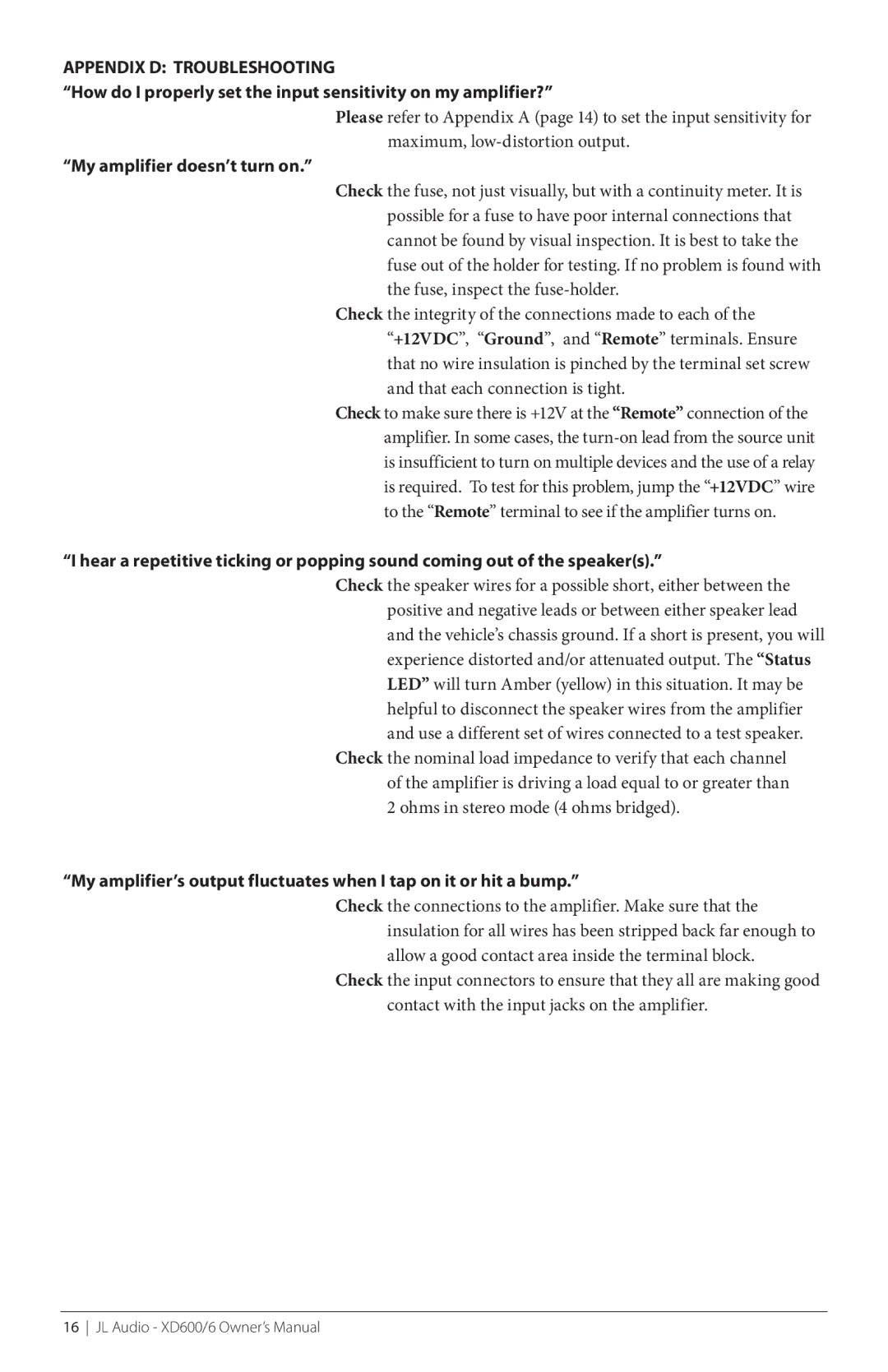Appendix D: TROUBLESHOOTING
“How do I properly set the input sensitivity on my amplifier?”
Please refer to Appendix A (page 14) to set the input sensitivity for maximum,
“My amplifier doesn’t turn on.”
Check the fuse, not just visually, but with a continuity meter. It is possible for a fuse to have poor internal connections that cannot be found by visual inspection. It is best to take the fuse out of the holder for testing. If no problem is found with the fuse, inspect the
Check the integrity of the connections made to each of the “+12VDC”, “Ground”, and “Remote” terminals. Ensure that no wire insulation is pinched by the terminal set screw and that each connection is tight.
Check to make sure there is +12V at the “Remote” connection of the amplifier. In some cases, the
“I hear a repetitive ticking or popping sound coming out of the speaker(s).”
Check the speaker wires for a possible short, either between the positive and negative leads or between either speaker lead and the vehicle’s chassis ground. If a short is present, you will experience distorted and/or attenuated output. The “Status LED” will turn Amber (yellow) in this situation. It may be helpful to disconnect the speaker wires from the amplifier and use a different set of wires connected to a test speaker.
Check the nominal load impedance to verify that each channel of the amplifier is driving a load equal to or greater than 2 ohms in stereo mode (4 ohms bridged).
“My amplifier’s output fluctuates when I tap on it or hit a bump.”
Check the connections to the amplifier. Make sure that the insulation for all wires has been stripped back far enough to allow a good contact area inside the terminal block.
Check the input connectors to ensure that they all are making good contact with the input jacks on the amplifier.
16 JL Audio - XD600/6 Owner’s Manual
